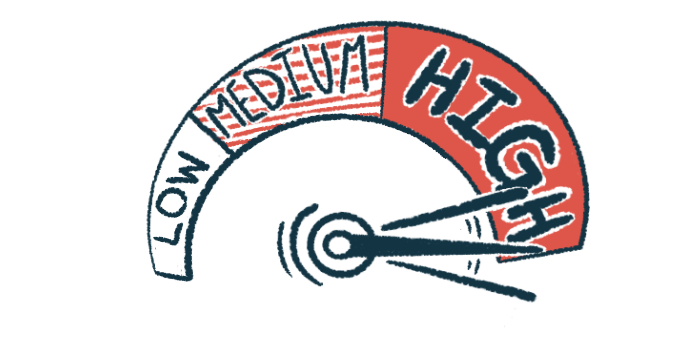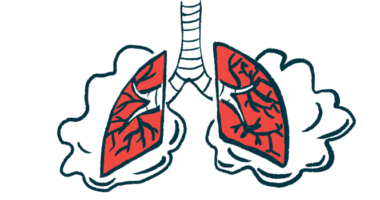AAV linked to higher risk of nonmelanoma skin cancer
European study: Azathioprine use, being older than 65 among risk factors

People with ANCA-associated vasculitis (AAV) are at a higher risk of developing nonmelanoma skin cancer (NMSC), the most common form of skin cancer, but not other types of cancer, according to a long-term follow-up study in Europe.
The use of the immunosuppressive therapy azathioprine, longer azathioprine treatment, and being older than 65 were independent risk factors of NMSC among people with AAV.
“We believe our study provides essential baseline information for the development and consideration of newer therapies that may have fewer side effects,” researchers wrote.
The study, “Long-term risk of malignancies in ANCA-associated vasculitis,” was published in EULAR Rheumatology Open.
Concerns remain regarding long-term malignancy risk tied to AAV treatments
AAV is a group of autoimmune diseases characterized by inflammation and damage to small blood vessels, typically caused by self-reactive antibodies called ANCAs.
Although early diagnosis and immunosuppressive treatments have significantly increased the survival of people with AAV, “concerns remain regarding the long-term malignancy risk associated with these treatments,” the researchers wrote.
Indeed, previous studies have demonstrated that people with AAV are at an increased risk for certain types of cancer.
Now, researchers from several European countries analyzed the frequency of cancer in 848 AAV patients who participated in appropriately controlled clinical trials coordinated by the European Vasculitis Society.
Previous, shorter follow-up data from these trials had suggested that the increased risk of cancer seen in AAV was mainly driven by a higher risk of NMSC, which refers to all skin cancers that are not melanoma, a disease that develops in the skin’s pigment cells. NMSC is usually less aggressive than melanoma and less likely to spread to other parts of the body.
Participants were mainly men (56%), had a mean age of 58 years, and had the AAV types granulomatosis with polyangiitis (GPA) and microscopic polyangiitis. The split between the two AAV types was 56% to 44%, respectively.
Participants who developed cancer were significantly older at trials’ start
Overall, 135 participants (15.9%) were diagnosed with cancer after a median follow-up of 6.3 years and at a mean age of 69 years. In 22 of them, a second type of cancer was diagnosed after a median follow-up of 9.1 years.
Participants who developed cancer were significantly older at the start of the clinical trials (62 vs. 57 years) and had a longer follow-up time (10.7 vs. 7.2 years). The majority were men (61%) and had GPA (59%).
The cumulative cancer rate was 10.8% at the five-year follow-up, gradually increasing to 38.2% at 20 years. Most cancers were diagnosed in the first five years of follow-up.
The most frequent cancer was NMSC (30.1%), followed by prostate cancer (11.1%), and lung cancer (9.8%). Other types of cancer included colorectal, bladder, breast, melanoma, leukemia, kidney, ovary, and lymphoma. In people who developed more than one cancer type, the second diagnosis was most commonly NMSC.
The death rate was significantly higher among people with cancer than in those without cancer (59.3% vs. 31.6%). More than half of those with cancer (59.3%) died after a median of 1.8 years following their diagnosis, mainly due to the cancer itself (45%), followed by infections (13.8%), and cardiovascular diseases (10%).
Risk of NMSC higher among women, people diagnosed with AAV before age 40
The team then calculated the standardized incidence ratio (SIR), which compared the number of cancer cases in AAV patients with the number of expected cases based on national cancer databases.
They found that the SIR for all types of cancer was 1.4, meaning that the observed number of cancer cases in AAV patients was significantly higher, by 40%, than that expected for the general population.
This higher risk was mainly driven by NMSC, which showed a SIR of 3.52, meaning that there was a 3.5 times significantly higher incidence of this type of cancer than expected. Notably, when NMSC was excluded from the analysis, the SIR for all cancers dropped to 1.17, and was no longer statistically significant, meaning that it could be due to random chance.
The risk of NMSC was higher among women, people diagnosed with AAV before the age of 40 years, and patients with ANCAs targeting the proteinase 3 protein. People living in Southeastern Europe, those with worse kidney function, and those recruited before the year 2000 also showed a higher risk of NMSC.
The findings of this study reinforce the results of our previous follow-up, showing an increased risk of NMSC in patients with AAV. … It remains a significant concern due to its potential for recurrence and, in some cases, severe outcomes.
Further statistical analyses showed that azathioprine use, longer azathioprine treatment, more than six months of treatment with cyclophosphamide, and age older than 65 years were risk factors of cancer. Azathioprine and cyclophosphamide are two immunosuppressive treatments commonly used in AAV.
“This suggests that cyclophosphamide should be reserved for short-term use,” the researchers wrote. “Similarly, azathioprine should be prescribed with caution.”
In terms of NMSC, independent risk factors included azathioprine use, longer azathioprine treatment, and age older than 65 years.
“Given the high incidence of NMSC, particularly in younger patients, it is crucial to emphasise preventive measures such as routine dermatologic screening and strict sun protection advice,” the researchers wrote. “The findings of this study reinforce the results of our previous follow-up, showing an increased risk of NMSC in patients with AAV.”
They noted that although NMSC does not spread to other parts of the body, “it remains a significant concern due to its potential for recurrence and, in some cases, severe outcomes.”








